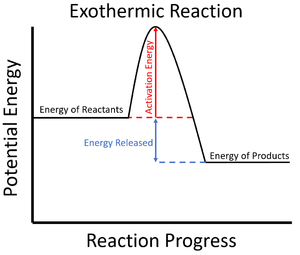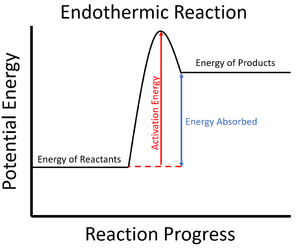Difference between revisions of "Reaction Profile"
| Line 28: | Line 28: | ||
:[https://www.amazon.co.uk/gp/product/1471851354/ref=as_li_tl?ie=UTF8&camp=1634&creative=6738&creativeASIN=1471851354&linkCode=as2&tag=nrjc-21&linkId=9012a0d354024419214fb3ad5ac44ba0 ''Reaction profiles, pages 232-3, 235, GCSE Combined Science Trilogy 1, Hodder, AQA ''] | :[https://www.amazon.co.uk/gp/product/1471851354/ref=as_li_tl?ie=UTF8&camp=1634&creative=6738&creativeASIN=1471851354&linkCode=as2&tag=nrjc-21&linkId=9012a0d354024419214fb3ad5ac44ba0 ''Reaction profiles, pages 232-3, 235, GCSE Combined Science Trilogy 1, Hodder, AQA ''] | ||
:[https://www.amazon.co.uk/gp/product/1782945571/ref=as_li_tl?ie=UTF8&camp=1634&creative=6738&creativeASIN=1782945571&linkCode=as2&tag=nrjc-21&linkId=9e29fad914244909903e5e93f8a01d223 ''Reaction profiles, pages 62, 68, GCSE Chemistry; The Revision Guide, CGP, AQA ''] | :[https://www.amazon.co.uk/gp/product/1782945571/ref=as_li_tl?ie=UTF8&camp=1634&creative=6738&creativeASIN=1782945571&linkCode=as2&tag=nrjc-21&linkId=9e29fad914244909903e5e93f8a01d223 ''Reaction profiles, pages 62, 68, GCSE Chemistry; The Revision Guide, CGP, AQA ''] | ||
| + | |||
| + | ====Edexcel==== | ||
| + | |||
| + | :[https://www.amazon.co.uk/gp/product/1782945741/ref=as_li_tl?ie=UTF8&camp=1634&creative=6738&creativeASIN=1782945741&linkCode=as2&tag=nrjc-21&linkId=30da4f2178da182547b62a7329d13b57 ''Reaction profiles, pages 133, 134, GCSE Combined Science; The Revision Guide, CGP, Edexcel ''] | ||
| + | :[https://www.amazon.co.uk/gp/product/1292120215/ref=as_li_tl?ie=UTF8&camp=1634&creative=6738&creativeASIN=1292120215&linkCode=as2&tag=nrjc-21&linkId=8f96ddb76196848bafdb124354e4cf77 ''Reaction profiles, pages 142, 144, 146, GCSE Chemistry, Pearson, Edexcel ''] | ||
| + | :[https://www.amazon.co.uk/gp/product/1782948147/ref=as_li_tl?ie=UTF8&camp=1634&creative=6738&creativeASIN=1782948147&linkCode=as2&tag=nrjc-21&linkId=f63dcd8345f4e49c717b39a228a36c7c ''Reaction profiles, pages 244, 245, GCSE Chemistry, CGP, Edexcel ''] | ||
| + | :[https://www.amazon.co.uk/gp/product/1782945725/ref=as_li_tl?ie=UTF8&camp=1634&creative=6738&creativeASIN=1782945725&linkCode=as2&tag=nrjc-21&linkId=694be7494de75af3349537d34e13f7f0 ''Reaction profiles, pages 82, 83, GCSE Chemistry; The Revision Guide, CGP, Edexcel ''] | ||
Revision as of 18:21, 27 November 2019
Contents
Key Stage 4
Meaning
A reaction profile is a simple graph showing the energy change which takes place as a reaction progresses.
About Reaction Profiles
- Reaction profiles can show the activation energy needed for a chemical reaction to begin.
- The reaction profile can be used to show whether a reaction is exothermic or endothermic.
Examples
| The reaction profile for an exothermic reaction can be identified by the fact that the products have less energy than the reactants. | The reaction profile for an endothermic reaction can be identified by the fact that the products have more energy than the reactants. |
References
AQA
- Reaction profiles, pages 116-117, 136, GCSE Chemistry; Third Edition, Oxford University Press, AQA
- Reaction profiles, pages 131-3, GCSE Chemistry, Hodder, AQA
- Reaction profiles, pages 136, 139, GCSE Combined Science; The Revision Guide, CGP, AQA
- Reaction profiles, pages 155, 156, 167, GCSE Combined Science Trilogy; Chemistry, CGP, AQA
- Reaction profiles, pages 180, 181, 199, GCSE Chemistry, CGP, AQA
- Reaction profiles, pages 232-3, 235, GCSE Combined Science Trilogy 1, Hodder, AQA
- Reaction profiles, pages 62, 68, GCSE Chemistry; The Revision Guide, CGP, AQA
Edexcel
- Reaction profiles, pages 133, 134, GCSE Combined Science; The Revision Guide, CGP, Edexcel
- Reaction profiles, pages 142, 144, 146, GCSE Chemistry, Pearson, Edexcel
- Reaction profiles, pages 244, 245, GCSE Chemistry, CGP, Edexcel
- Reaction profiles, pages 82, 83, GCSE Chemistry; The Revision Guide, CGP, Edexcel

